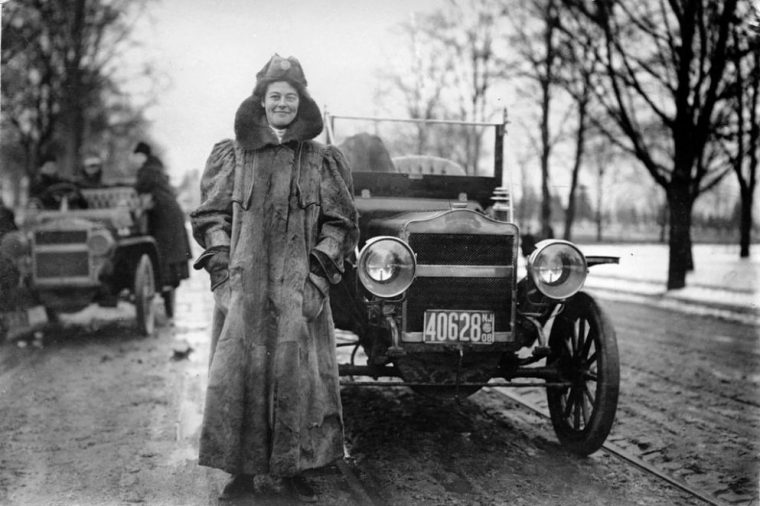America is land of the free and home of the brave. Part of that legacy is the fact that, unlike some countries, women have never been banned from driving cars. While women can drive, the American automotive culture as a whole is seen as male-dominated. On Women’s Equality Day, we have to ask ourselves: Has it always been this way?
When cars first came to America, wealthy women were some of the early adopters that helped the industry grow in the first place. Since the beginning, though, men have been making fun of female drivers, saying that males were the superior motorists. To help combat this, Alice Ramsey of New Jersey became the first woman to drive across the US in 1909, making several repairs to the car herself along the way. Female inventors also contributed to early cars, like Mary Anderson did when she invented the windshield wiper. The freedom provided by cars was intoxicating, and women were not immune to the car fever spreading around the nation.
During the suffragette period, the easy mobility of automobiles helped the movement grow, as transportation became easier. Cars were oftentimes used in parades, and as makeshift platforms from which to speak. When celebrating the 50th anniversary of the 19th Amendment, the commemorative postage stamp included the image of several women piled in a decorated car, ready to march for their right to vote.
A key invention to removing protests that men had to women drivers was the self-starter, invented by Charles Kettering in 1912. Before the self starter, one had to crank the car to get it to start, which could be dangerous for drivers of both genders. Several women became motorists during the World Wars, when men were gone and female drivers took their place behind the wheel, either personally or professionally. Single women and widows could also be employed by automakers to work on the assembly lines, and the Girl Scouts even focused on girls learning how to drive, perform minor repairs, and take care of any crash injuries with a special “Automobiling Badge”.
What happened, then, to make the automotive world so decidedly male? The University of Michigan speculates that men were usually the primary drivers when cars first came out and were fairly expensive. Many families could only afford one car, and it was expected that the men drove the car since they were in charge and had to get to work. The new domestication expected of women after World War II, when they left their war jobs to focus on families, reinforced the image of the breadwinner taking the car to work and leaving the wife at home, relying on public transportation. Women once again began to take the driver’s seat in the post-war manufacturing boom and its resulting middle class, especially in suburban areas with poor public transport and far away amenities, but by then the damage had been done. While many women certainly influenced car purchases, the men were seen as the primary decision makers.
There are signs in the industry that women are once again gaining prominence world of cars, with apps and services springing up to help them find the best vehicles for their money. Advertising is starting to be aimed at women, and race car drivers like Danica Patrick and executives like GM’s Mary Barra are making strides in the industry. If you ever hear someone saying that cars are all about men, though, remind them of the long line of women who have successfully taken the wheel from the beginning of the automobile age.
History Sources: Hagerty Classic Car Insurance and The University of Michigan-Dearborn’s Automobile in American Life and Society
The News Wheel is a digital auto magazine providing readers with a fresh perspective on the latest car news. We’re located in the heart of America (Dayton, Ohio) and our goal is to deliver an entertaining and informative perspective on what’s trending in the automotive world. See more articles from The News Wheel.
